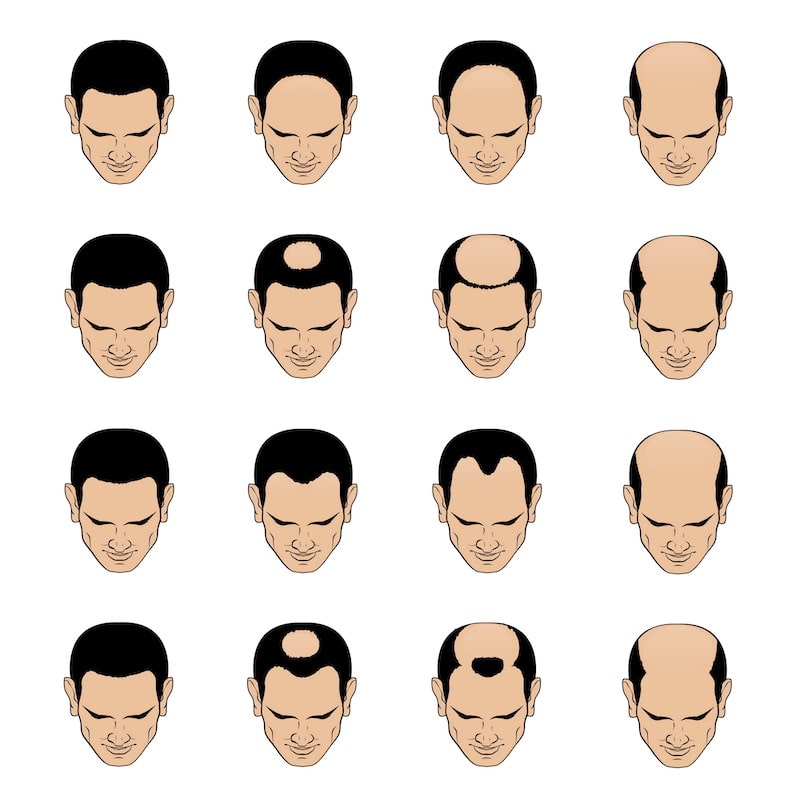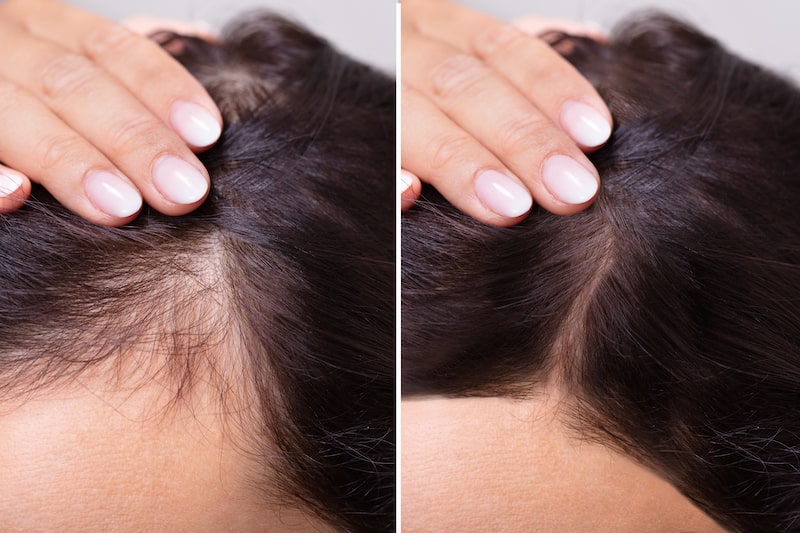5 Minute Read:
You may be surprised to learn that there are a variety of conditions that lead to hair loss (alopecia), and without a proper diagnosis, you can end up spending a lot of time, energy, and money on treatments that don’t work.

Fortunately, if you have the right doctor and they are equipped with the latest in advanced medical technology, you can often find a solution to your unique hair loss condition.
Finding a Board-Certified Plastic Surgeon for Your Consultation
Choosing a board-certified plastic surgeon who offers the latest in hair restoration is the best place to start when all at-home hair loss treatments have failed to produce desired results.
During your incision consultation, your doctor will examine your scalp thoroughly to help evaluate the cause of your hair loss and determine the right hair restoration approach for you.
Some of the most advanced solutions include NEOGRAFT® hair transplant technique and platelet-rich plasma (PRF) for hair loss. Both of these offer hope to those with all types of alopecia.
Many types of hair loss resist treatment, and some can’t be reversed at all, but with NEOGRAFT® and PRF, men and women who once had no hope are finding impressive results.
9 Causes of Hair Loss
Hair loss falls into one of two categories, non-scarring and scarring alopecias. Early intervention by a qualified plastic surgeon is crucial to effectively treating all types of hair loss, especially scarring alopecia.
- Telogen effluvium – This non-scarring alopecia causes the patient to lose approximately three times more hair per day than normal and can be proceeded by:

- Childbirth
- Severe infection
- Extremely high fever
- Chronic illness (autoimmune, HIV, etc.)
- Major surgery
- Endocrine disease
- Significant sudden weight loss
- Some medications
- Iron and vitamin D deficiencies
- Excessive intake of vitamin A
These events often occur three to six months before hair loss is noticed.
- Alopecia areata – A non-scarring alopecia directly related to an autoimmune disorder such as:
- Atopic dermatitis
- Vitiligo
- Inflammatory bowel disease
- Thyroid disorders
- And more
Stress can help trigger alopecia areata, which can occasionally progress to complete baldness or body hair loss.
- Androgenetic alopecia – This final non-scarring alopecia is better known as female or male pattern baldness.
An excess of the hormone dihydrotestosterone leads to the steady miniaturization of hairs growing on the crown and midline of women and the frontal, midline, and vertex areas of men.
Telogen effluvium and alopecia areata can sometimes occur in conjunction with Androgenetic Alopecia.
- Central centrifugal cicatricial alopecia – Also known as CCCA, this scarring alopecia is more commonly experienced by women of African descent between the ages of 30 and 50. Caucasian men over 60 also suffer from this type of hair loss. Chemical hair relaxers or thermal straighteners may increase the risk of developing CCCA.
- Acne keloidalis nuchae – This scarring alopecia occurs on the occipital scalp and often affects young men with curlier hair. This type of hair loss is preceded by smooth pustules and papules that form around the hair follicles.
- Lichen planopilaris – Also known as LPP this scarring alopecia involves severe inflammation, is more common in Caucasian women than in men and affects the crown and vertex.
- Frontal fibrosing alopecia – Also known as FFA, this condition is almost identical to LLP but affects the forehead, hairline, and eyebrows.
- Discoid lupus erythematosus (DLE) – DLE is a scarring alopecia characterized by patches of missing hair, circular lesions of red, scaly, or dilated hair follicles.
- Traction alopecia – This scarring alopecia is usually caused by keeping hair in ponytails, braids, buns, or other tight hairstyles for extended periods.
Minoxidil works in some of these conditions, but many hair loss sufferers (especially those with scarring alopecias) could only hope that treatment would stop future hair loss.
Some are only prescribed antibiotics, steroids, and vitamins, while others require surgery to remove scars.
In the past, those who qualified for hair transplants had to undergo invasive procedures that delivered unpredictable and often unsatisfactory results.

What Is the NEOGRAFT® Hair Transplant or FUE Method?
NEOGRAFT® is an advanced hair restoration option that requires no scalpels or sutures and involves a far less invasive process.
Your surgeon removes several groups of hair follicles from the back of the head, where most of your healthiest hair is located, using the handheld NEOGRAFT® device. This is known as follicular unit extraction or the FUE method.
This hair is transplanted to the thinning areas to stimulate hair growth.
How Does PRF Help Grow New Hair?
Platelet-rich plasma (PRF) is a derivative created from your blood. It was initially used to help injured tissue heal, and its success has led to many other applications.
Because platelets restore cell health, this regenerative treatment recently began being used to regrow hair and continues to produce excellent results.
Can NEOGRAFT® and PRF Help You Get Your Hair Back?
NeoGraft® is designed to deliver excellent results for many patients struggling with thinning hair.
It is not suitable for individuals who are totally bald or whose remaining hair is of poor quality. It is also not recommended for men and women at high risk of significant future hair loss.
Good candidates for PRF hair restoration are those in good overall health who are experiencing hair loss. PRF is extremely safe and appropriate for most patients; however, it is not recommended under the following circumstances:
- You have problems with bleeding or clotting
- You have a low platelet count
- You have a blood infection or have recently recovered from one
- You are receiving therapy with cortisone
- You have low or unstable blood pressure
- You have cancer or are in remission
- You smoke or use nicotine
Advanced Hair Loss Treatment in Virginia
Contact NOVA Plastic Surgery and Dermatology at (703) 215-9152 to schedule your hair restoration consultation. We would love to help you have the full head of hair you desire.
